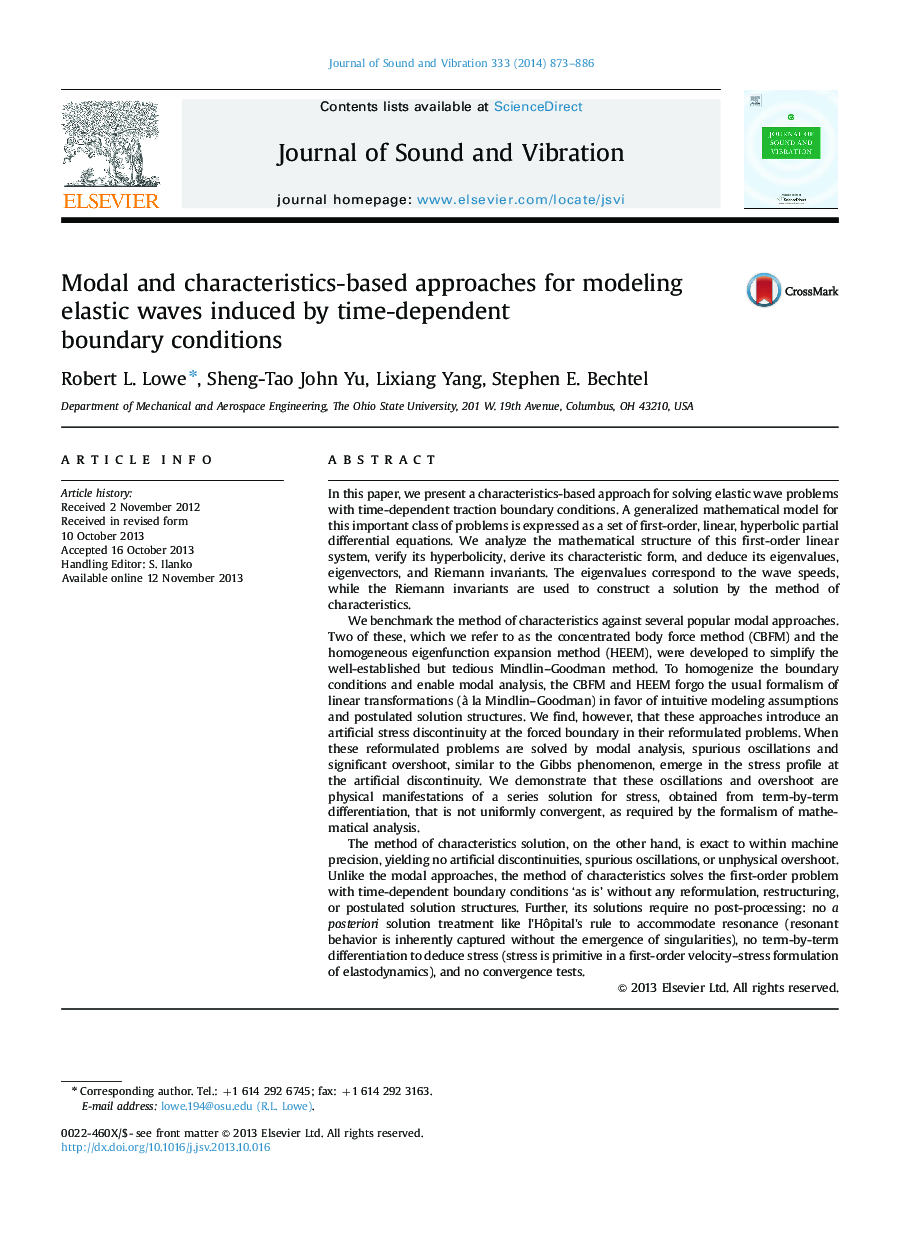| Article ID | Journal | Published Year | Pages | File Type |
|---|---|---|---|---|
| 10289344 | Journal of Sound and Vibration | 2014 | 14 Pages |
Abstract
The method of characteristics solution, on the other hand, is exact to within machine precision, yielding no artificial discontinuities, spurious oscillations, or unphysical overshoot. Unlike the modal approaches, the method of characteristics solves the first-order problem with time-dependent boundary conditions 'as is' without any reformulation, restructuring, or postulated solution structures. Further, its solutions require no post-processing: no a posteriori solution treatment like l'Hôpital's rule to accommodate resonance (resonant behavior is inherently captured without the emergence of singularities), no term-by-term differentiation to deduce stress (stress is primitive in a first-order velocity-stress formulation of elastodynamics), and no convergence tests.
Related Topics
Physical Sciences and Engineering
Engineering
Civil and Structural Engineering
Authors
Robert L. Lowe, Sheng-Tao John Yu, Lixiang Yang, Stephen E. Bechtel,
